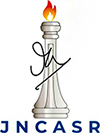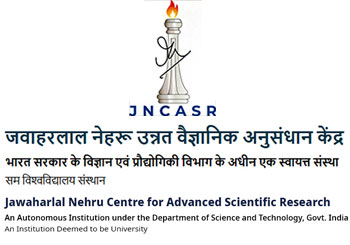Human embryonic stem cell (hESC) lines
Human embryonic stem cell (hESC) lines
List of cell lines available
1. JNCSRe001-A (BJNhem19) : https://hpscreg.eu/browse/provider/387
2. JNCSRe002-A (BJNhem20) : https://hpscreg.eu/browse/provider/387
3. BJNhem20-OCIAD1-CRISPR-20
4. BJNhem20-OCIAD1-CRISPR-39
5. BJNhem20-TetR
6. BJNhem20-OCIAD1-Tet-On.1
7. BJNhem20-OCIAD1-OV
8. BJNhem20-Asrij
9. BJNhem20-pCAG-tdTomato
10. BJNhem20-pCAG-tdEGFP
General information
The human embryonic stem (ES) cell lines BJNhem19 and BJNhem20 may be obtained by academic and non-academic researchers. All requests require that an application is made to the DBT Steering Committee for the Use of Human Stem Cell Lines (referred to as the DBT Steering Committee). Applications must be submitted in the approved format along with evidence of approval from the appropriate ethics committee(s), for scrutiny by the DBT Steering Committee. JNCASR cannot approve applications for access to its stem cell lines.
Upon approval of the application, applicants will need to sign a Material Access Agreement (MAA) with JNCASR and have negotiated a Materials Use Licence.
JNCASR is unable to release cells to researchers without copies of the documents that prove that the researcher has
(i) obtained the necessary permission from the DBT Steering Committee to undertake the work
(ii) provided a copy of the necessary approval from the Institutional Committee for Stem Cell Research (IC-SCR) or equivalent review committee.
(iii) entered into an appropriate agreement with JNCASR to allow access to the cell lines.
(iv) paid the necessary charges for obtaining the cells.
Before requesting the human ES cell line, please consider the following
1. JNCASR will provide only one frozen vial per Requestor of the hES cell line requested, from a batch that is tested for thawing efficiency, pluripotency, normal karyotype and differentiation.
2. We cannot provide additional vials or replacements. Kindly ensure that sufficient expertise is available with your group for culture of human ES cells. The protocol for culture of BJNhem19 and BJNhem20 can be downloaded by clicking here.
3. Kindly ensure that you have procedures in place to comply with ICMR/DBTguidelines on stem cell research
4. Ensure that your organization has constituted an Institutional Committee for Stem Cell Research (IC-SCR) or equivalent review committee. For more information please see the icmr.nic.in/guidelines/NGSCR%202013.pdf
5. Obtain approval from the IC-SCR or equivalent review committee for your project and submit a copy of the approval certificate with your application.
6. The cost of shipping and responsibility for documents required for the same will be borne by the Requestor.
Obtaining human ES cell lines derived at JNCASR:
1. Submit your application in the approved format only to
Dr. Alka Sharma
Director/Scientist 'F', Medical Biotechnology Division
R. No. 713, Department of Biotechnology,
Ministry of Science and Technology, Government of India,
Block 2, C.G.O Complex, Lodhi Road, New Delhi
Phone : 0091-11-24363699; Fax: 0091-11-24362884
Email: alka[dot]dbt[at]nic[dot]in
Subject line: Application for Utilization of hESC Lines
Mark a copy to: stemcell[at]jncasr[dot]ac[dot]in
2. After obtaining approval from DBT Steering Committee, please send a formal request for the cell line to stemcell[at]jncasr[dot]ac[dot]in. Please attach a copy of a] your application b] DBT Steering Committee approval and c] IC-SCRT approval
3. JNCASR will then send the Requestor a Materials Transfer Agreement (MTA) and a Material Use License (MUL) as appropriate.
4. Upon return of the signed MTA and MUL, JNCASR will provide the stem cells to the Requestor.
5. Please send shipping and billing address and related information to stemcell[at]jncasr[dot]ac[dot]in
Cell line information:
Human Embryonic stem cell lines currently available from JNCASR are BJNhem19 and BJNhem20. The cell lines are karyotypically normal, sibling human ES cell lines representing the Indian ethnic genetic background.They were derived from the inner cell mass (ICM) of grade III poor quality blastocysts that were not suitable for in vitro fertility treatment. Both the lines are pluripotent, have been extensively characterized and cultured continuously for over 250 passages.
http://www.eurostemcell.org/commentanalysis/stem-cell-banking-uk-perspective-global-challenge
http://www.ukstemcellbank.org.uk/stem_cell_lines/stem_cell_catalogue.aspx
Additional Information:
BJNhem19 and BJNhem20 human ES cell lines have been deposited in the UK Stem Cell Bank

http://www.ukstemcellbank.org.uk/
UKSCB accession nos. R-08-021 and R-08-022
BJNhem19 (NIH Registration no. 0083) and BJNhem20 (NIH Registration no. 0084) human ES cell lines are eligible for use in NIH-supported research under the new Guidelines.
http://stemcells.nih.gov/research/registry/
http://grants.nih.gov/stem_cells/registry/current.htm
BJNhem19 and BJNhem20 human ES cell lines are listed on the European hESC Registry (http://www.hescreg.eu/).
BJNhem19 and BJNhem20 human ES cell lines are listed on the International Stem Cell Registry (http://www.umassmed.edu/iscr/index.aspx).
Stem Cell Forum (Ministry of Science and Technology):
http://www.stem-cell-forum.net/ministry-of-science-and-technology-government-of-india/
References:
1) Inamdar et al. (2009). Derivation and characterization of two sibling human embryonic stem cell lines from discarded grade III embryos. Stem Cells Dev. 18: 423-433
2) Venu et al. (2010). Analysis of long term culture properties and pluripotent character of two sibling human embryonic stem cell lines derived from discarded embryos. In vitro Cell. Dev. Biol. - Animal. 46: 200-205.
3) Screening ethnically diverse human embryonic stem cells identifies a chromosome 20 minimal amplicon conferring growth advantage. Nature Biotechnology. doi. 10.1038/nbt.2051(Nov 2011).
4) Shetty et al. (2015). Generation of transgenic human embryonic stem cell line BJNHem20-OCIAD1-OV. Lab Resource: Stem Cell Research (In Press)
5) Shetty et al. (2015). Generation of human embryonic stem cell line expressing green fluorescent protein. Lab Resource: Stem Cell Research (In Press)
- Back to previous page
- |
-
Page last updated date:23-05-2025 07:01 PM























